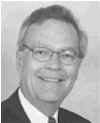|

|
Birdies,
Bogies and the Back Nine
Golfing
in the Old Dominion
Serious
golfers in Virginia are definitely not alone. The Virginia
State Golf Association (VSGA) now offers its
services to more than 75,000 golfers and 300 member
clubs/facilities in the Old Dominion. By 2000, when
sports writer Jim Ducibella published his book,
"Par Excellence – A Celebration of Virginia
Golf," commonwealth golfers had won 16
“major” championships and played in about 200
events, sponsored by the Professional Golfers
Association (PGA).
Virginia’s
illustrious golf
history includes such feats as consecutive U.S.
Open victories by Curtis Strange of Virginia Beach
in 1988 and 1989. Only the legendary Ben
Hogan accomplished similar wins. Richmond’s
Lanny Wadkins won the first major tournament decided
in a sudden-death playoff during the 1977 PGA.
Another Virginian, Chandler Harper of Portsmouth, is
credited with shooting the lowest 54-hole total ever
at the Texas Open in 1951. Some of the sport’s
greatest players have played on Virginia’s greens.
Arnold
Palmer and Kathy
Whitworth won their last tournaments here and Sam
Snead first gained attention at Hot Springs.
Virginians have also served as presidents of the
U.S. Golf Association and as commissioner of the PGA
tour.
While
there may have been some informal golf during the
colonial period, the father of modern golf in
Virginia is Fay Ingallis, son of the owner of The
Homestead resort in Hot Springs. He was exposed to
the game just across the border at the Oakhurst
Estate in White Sulfur Springs, W. Va. Russell
Montague, an immigrant from Scotland, where the game
had been played for centuries, established a
six-hole course there as early as 1884. In a book
Ingallis wrote, The Valley Road, he reported he was
attracted to golf at the “Montague meadows”
where he was encouraged to “knock a ball about his
pasture.” Ingallis brought the sport home to
his father, M.E. Ingallis, who “caught the bug”
and established the game at his Bath County resort
in 1892. As a result, The Homestead boasts “the
oldest first tee in continuous use in the United
States.”
Meanwhile,
the game began to spread elsewhere in the state. In
1895, an Englishman named R.P.C. Sanderson
“introduced to Roanoke a collection of queer and
greenish looking ‘shinny’ sticks. The
mysteriousness of the driver, brassie, mashie,
jigger, niblick and putter were unfolded to an
amazed and credulous audience.” according to
unknown enthusiast at Roanoke Country Club. A
pictorial history of Richmond indicates that one
Allan Potts demonstrated the game by creating a
series of golf holes using tomato cans near what is
now Monument Avenue. Golf clubs soon followed. In
1894, a group of men who had been playing on a
nine-hole course in Rosslyn formed the Washington
Golf and Country Club, the state’s oldest golf
club. The Virginia Hot Springs Golf and Tennis Club
soon followed at The Homestead. In 1900, Richmond
tobacco magnate Lewis Ginter installed a nine-hole
course at the end of the city’s trolley line.
("A
Historical Perspective: The Game Takes Root in
Virginia.")
From
a sport for Virginia’s turn-of-the century elite,
golf has evolved into a pastime enjoyed by
thousands. A few years back The Washington Post
listed Virginia’s highest-rated golf courses in
the Zagat Survey of America’s Top Golf Courses.
They included Stonewall Golf Club in Gainesville,
Bay Creek in Virginia Beach, The Homestead (often
ranked one of the nation’s top 10) in Hot Springs,
and the Gold and Green courses at the Golden
Horseshoe in Williamsburg ("Players'
Choice: The Best of Maryland and Virginia,"
The Washington Post, April 16, 2005.)
So,
how dedicated a golfer are you? Here are a few
trivia questions devised by the VSGA for its recent
centennial celebration. In 1925, direct airplane
service was begun from New York to which Virginia
golf course? Which Virginia city had the first
municipal golf course? Name a golf course built on a
Civil War battlefield. For the answers and more
questions, see the VSGA
Centennial Golf Trivia Quiz.
NEXT:
Millions of Kilowatt Hours: Nuclear Power in
Virginia
--
January 14, 2008
|
|
